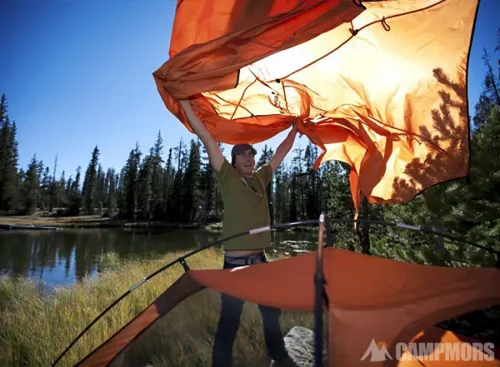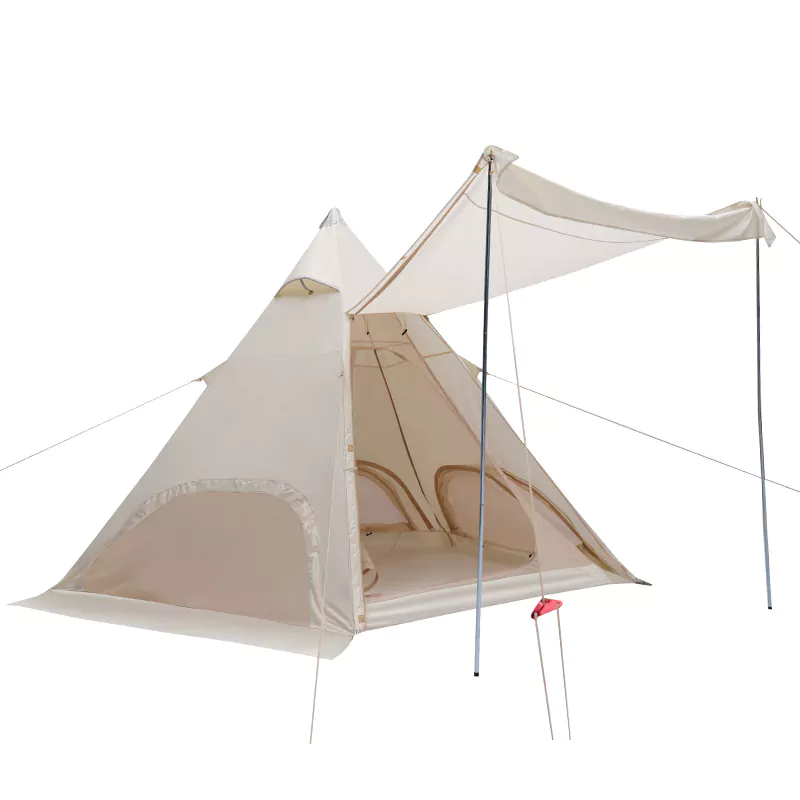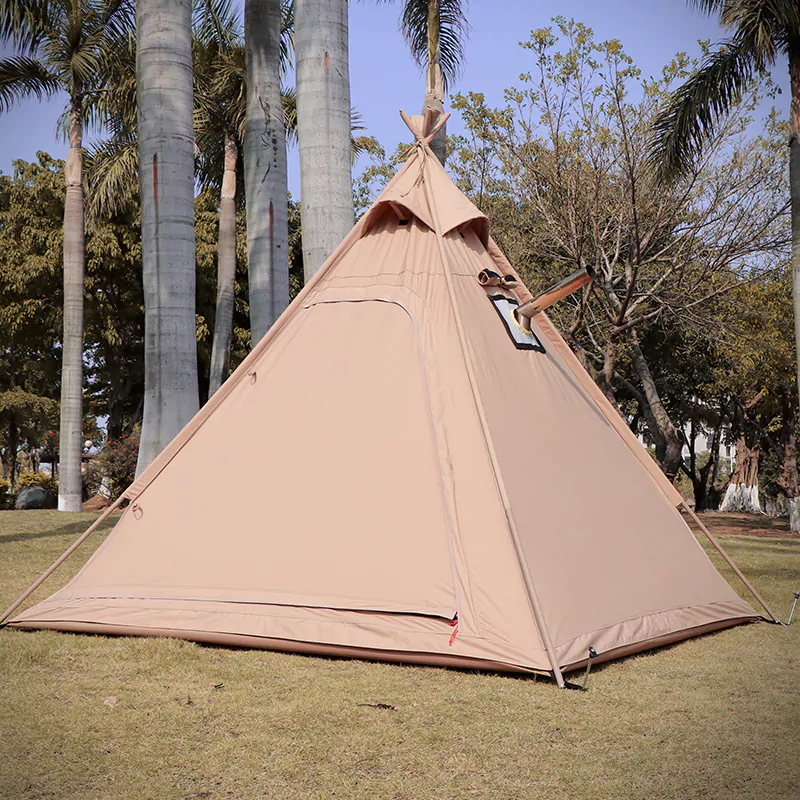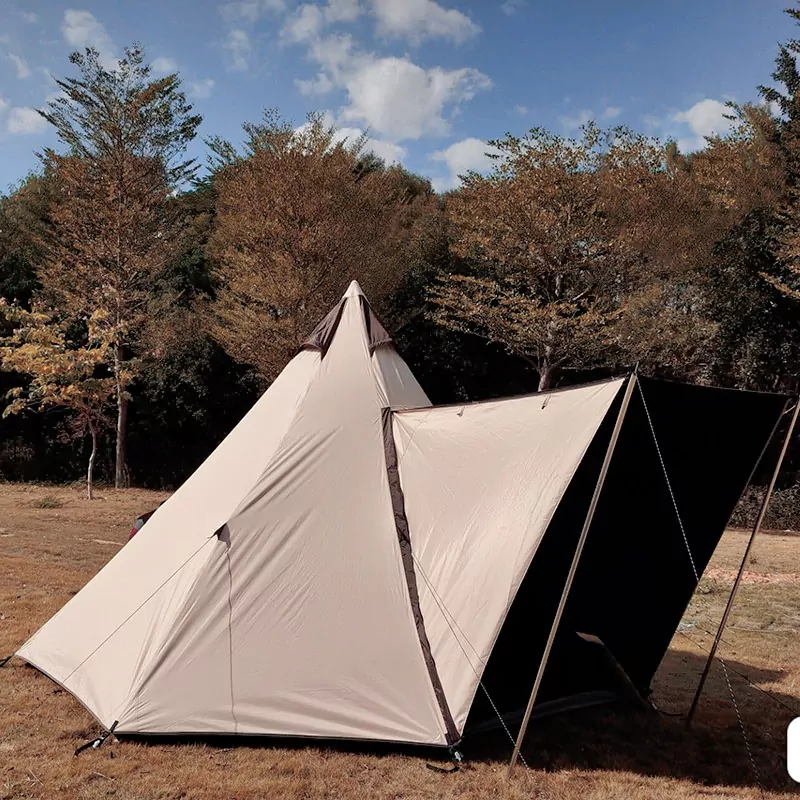More Blogs

Top 7 Best Considerations Before Setting Up a Tent
When it is going to be dark, raining, windy, etc. in the wild, it is
May 15, 2022
High Quality Outdoor Camping Nature Trekking/Hiking Spire Tent. A tower pyramid type, four corners ~ octagonal, etc. Great deals on Peak tents including yurt tent, Bell tent, tent house. Portable and convenient, it is easy to create your own personalized light luxury small camp. Spend less money to make your travel more comfortable.



Outdoor Camping Hiking Pyramid Spire Tent Series.
A spire tent is a type of camping tent that features a unique, A tower spire-shaped design. Also sometimes called: wedge tent and conical tent. This design typically includes a high, peaked roof that provides plenty of headroom and interior space, as well as a wide base that offers stability and protection from the wind. Spire tents are popular among campers who value comfort and spaciousness, and they are often used for family camping trips, festivals, and other outdoor activities.
Spire tents are a popular type of camping tent known for their unique, spire-shaped design. While most pointed tents share a similar overall shape, there are actually several different types of peak tents available on the market. Here, we’ll take a closer look at the four most common shapes of spire tents and what makes each type unique.
In conclusion, best pyramid tents are available in a variety of shapes and designs, each with its own unique benefits and features. Whether you prefer the stability of a pyramid spire tent, the spaciousness of a yurt spire tent, the ease of setup of a bell spire tent, or the versatility of a hut spire tent, there is a spire tent out there that is sure to meet your needs.
Spire tents are a popular choice for outdoor camping enthusiasts due to their unique pointed or cone-shaped design. Below we summarize the advantages of a-shaped tents and what makes them stand out from other types of tents.
In conclusion, A type spire tents offer many advantages over traditional tents, including more headroom, improved ventilation, increased stability, more space, durability, and a unique design. Whether you are a seasoned camper or a beginner, a spire tent is definitely worth considering for your next outdoor camping.
When it comes to choosing the right spire tent for your next camping trip, there are several factors to consider. Wedge tents come in a variety of sizes, shapes, and designs, so it’s important to know what to look for in order to make an informed decision. Next, we will explore some of the key considerations to keep in mind when choosing a-frame spire tent.
By taking these factors into account, you can find a spire tent that meets your needs and provides a comfortable and enjoyable camping experience.
Building a conical tent can seem daunting, but with the right tools and knowledge, it can be a straightforward process. Follow these steps to build a spire tent:
By following these steps, you can successfully build a spire tent and enjoy a comfortable and secure camping experience.
Properly packing and storing your peak tent is crucial for maintaining its quality and longevity. Here are some tips to help you pack and store your wedge tent:
Clean and dry the tent: Before packing the conical tent, make sure it’s clean and completely dry. Dirt and moisture can damage the tent fabric and lead to mold growth, so it’s essential to remove any dirt or debris and allow the tent to dry completely. To clean the tent, use a soft-bristled brush or sponge and a mild soap and water solution. Avoid using harsh chemicals or abrasive scrubbers, as these can damage the tent’s waterproof coating. Rinse the tent thoroughly with clean water and hang it up to air dry completely.
Disassemble the spire tent: Take apart the spire tent components and store them separately. Start by removing the tent stakes, guylines, and any other accessories. Then, disassemble the tent poles and store them in their own bag. Finally, detach the tent body from the rainfly and store them separately.
Pack the tent: When packing the spire tent, fold or roll each component tightly to minimize its size. Start by packing the wedge tent body into its stuff sack. If the tent has a footprint or groundsheet, place it inside the stuff sack as well. Next, pack the poles into their own bag or sleeve. Make sure to collapse the poles according to their specific design, as some may have to be broken down into smaller segments. Then, pack the stakes and guylines into their own bag. Finally, pack the rainfly into its own stuff sack.
Store the tent in a dry place: Once you’ve packed the spire tent, store it in a cool, dry place where it won’t be exposed to moisture, direct sunlight, or extreme temperatures. Avoid storing the tent in a damp basement, garage, or attic, as this can lead to mold growth or mildew. Instead, choose a closet or dry storage area where the tent won’t be disturbed. If you’re storing the conical tent for an extended period, consider placing a desiccant packet or moisture absorber in the storage container to prevent excess moisture buildup.
Avoid compressing the tent for long periods: While it’s okay to pack the spire tent tightly for short periods, avoid compressing it for long periods. Compressing the tent can cause creases in the fabric, which can lead to wear and tear over time. If you need to store the spire tent for an extended period, consider hanging it in a closet or storing it in a larger bag that allows for more airflow.
By following these steps, you can properly pack and store your peak tent, which will help preserve its quality and longevity. A well-cared-for tent can last for many years and provide countless camping adventures.
There are several accessories that can enhance your wedge Tent camping experience. Here are some examples:
Of course, there are many accessories besides the above items that can enhance your camping experience. Choosing accessories that fit the situation can make camping with your A-shaped wedge tent more comfortable and enjoyable.
Spire tents and dome tents are two popular types of camping tents, each with their own unique features and benefits. Here’s a closer look at the differences between spire tents and dome tents:
Overall, the choice between a spire tent and a dome tent comes down to personal preference and the specific needs of your camping trip. If you’re camping in windy or stormy conditions and need a stable and wind-resistant shelter, a spire tent may be the better choice. If you’re looking for a more spacious and easy-to-carry option, a dome tent may be the way to go.

When it is going to be dark, raining, windy, etc. in the wild, it is
